Top textile printing books
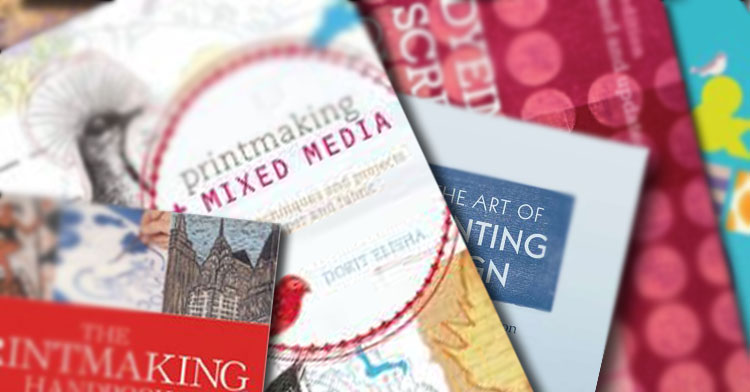
Textile artists and designers are increasingly working with mixed-media; many of our most innovative artists use textile printing to achieve stunning results in their art. Joanna Kinnersly-Taylor, Caren Garfen and up and coming textile artist Rachel Parker all create beautiful pieces of printed textile art using a variety of techniques including silk-creen printing and digital printing.
If you’re looking to expand your knowledge of print and experiment with this highly versatile and varied technique, you may be seeking some guidance. Here we take a look at 9 of the best textile printing books to get you started; they’re all Amazon best-sellers and boast several 5 star reviews.
Contents at a glance (click the links to be taken to the book review):
- The Complete Guide to Designing and Printing Fabric
- The Printmaking Handbook
- Designing and Printing Textiles
- Dyeing and Screenprinting Textiles
- Screen Printing: Layering Textiles with Colour, Texture and Images
- Print, Pattern, Colour
- Printmaking and Mixed Media
- From Print to Stitch
- Print and Pattern
1, The Complete Guide to Designing and Printing Fabric
by Laurie Wisbrun
Benefits of the book
The Complete Guide to Designing and Printing Fabric guides readers through the whole fabric design process. It explores varied and exhaustive textile printing methods including digital printing, screenprinting, stamping, stencilling, monoprinting, resis dying, inkjet printing and painting. The book also provides thorough and simple-to-follow tutorials on designing a print pattern and helps readers find inspiration for their work. It’s packed with tutorials and words of wisdom from established and celebrated textile designers that readers are bound to find enlightening.
What to be aware of: The book is aimed at textile designers looking to go professional and there are plenty of industry tips to make this a reality. However, the focus on designers means that textile artists will have to filter the information. Having said that, there’s plenty for artists to enjoy and learn from in this beautifully illustrated and clearly explained manual.
Selected Amazon Review: ‘The Complete Guide to Designing and Printing Fabric – K.Platt
About the Author: Laurie Wisbrun is a pattern and textile designer. She has produced art for textiles, craft products, home decor, wallpaper, children’s clothing and stationery.
- See The Complete Guide to Designing and Printing Fabric

- See The Complete Guide to Designing and Printing Fabric
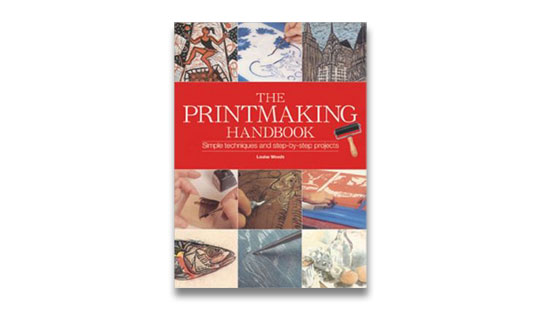
The Printmaking Handbook
2, The Printmaking Handbook
by Louise Woods
Benefits of the book
This hardcover book is great for beginners, but also provides good advice for more experienced printers. It is the perfect size to keep as a handy and useful reference and offers a brilliant overview and introduction to several printmaking methods, from the traditional to the more contemporary, including intaglio printing, relief printing, lithography and screenprinting. The Printmaking Handbook is very easy to understand and readers won’t feel intimidated or daunted by technicalities. It also covers how to set up a workshop, the best inks, papers, and printing surfaces to use, and the correct safety procedures to follow.
What to be aware of: Perhaps an artist who is at a more advanced level when it comes to textile printing would not find this book particularly useful. It’s aimed at the beginner and the guidance offered is excellent on this level, but it’s more of a starting point before delving deeper into the craft of printing. It’s also not specifically written for those working with textiles, although the majority of the information is pertinent to this area.
Selected Amazon Review: ‘A comprehensive gem of a book. Definitely one of the best‘ – Peter Gander
About the author: Louise Woods is a freelance editor and education writer.
3, Designing and Printing Textiles
by June Fish
Benefits of the book
Designing and Printing Textiles gives inspiration and actionable information aimed at textile students and designers. The guidance covers coming up with creative ideas and realising them visually. It also offers a broad overview of historical and cultural influences in the context of surface pattern design, pattern structures and design components. There are also techniques for working with paper and fabric (and transferring ideas from one to the other), technical and practical information about fabrics, dye recipes, and the tools required The range of methods explored will ensure that you find the one to suit your needs.
What to be aware of: The book is fairly expensive in comparison with some of the alternatives, but the author’s knowledge of her subject is masterful. There is a focus on screenprinting and dyeing, with only a general reference to other techniques such as block printing.
Selected Amazon Review: ‘This is an excellent practical guide for students studying textiles – especially in dye and fabric printing‘ – Billie
About the author: June Fish is Senior Dye Technician at Central St Martins College of Art and Design. She has worked extensively as a textile designer in fashion.
- See the Designing and Printing Textiles

- See the Designing and Printing Textiles
4, Dyeing and Screenprinting on Textile
by Joanna Kinnersly-Taylor
Benefits of the book
This book is the perfect guide for students, but also offers insights for established artists and designers looking to broaden their knowledge and experiment with a variety of new and exciting methods. In Dyeing and Screen-Printing on Textiles all the key processes for creating dyed and screen-printed fabrics are covered. There are great recipes for cloth preparation, as well as guides for dyeing and printing, fixation, preparing screens for exposure and realising a repeat. Expert advice is offered on a variety of related subjects including the equipment required and safe working practice. Beautiful and inspiring images of works by international textile artists and designers give the book a classy, practical edge.
Selected Amazon Review: ‘Much of the book is aimed at those working professionally or studying textiles but the clear prose and bright pictures make it equally interesting for those pursuing textile art as a hobby‘ – S.Small
About the author: Joanna Kinnersly-Taylor is a highly respected textile artist and designer whose work has appeared in a multitude of books and magazines. Read her TextileArtist.org interview.
5, Screen Printing: Layering Textiles with Colour, Texture and Imagery
by Claire Benn and Leslie Morgan
Benefits of the book
Showing how to use silkscreen in a flexible and creative way, this practical ‘how to’ style book will inspire you to make the most of a highly versatile tool. Screenprinting: layering Textiles with Colour, Texture and Images vividly demonstrates the vast possibilities of printing on cloth, exploring imagery, line, shape and texture and offering alternative and experimental techniques. Also included are great recipes for a variety of media such as thickened dyes and discharge paste and a guide on colour mixing, fabric selection and acrylics. An inspirational ‘Projects’ chapter allows the reader to see the potential of a single design and the accompanying DVD gives expert advice.
Selected Amazon Review: ‘It seems pricey, but you get what you pay for, the passion and enthusiasm of two very dedicated ladies with a desire to pass on their skills to like minded textile students‘ – J Woodhead
About the authors: Claire Benn and Leslie Morgan have collaborated on several textile art books, including Making Your Mark: Embroidery Embellishment and Finding Your Own Visual Language: A Practical Guide to Design and Composition.
6, Print, Pattern and Colour
by Ruth Issett
Specifically catering for textile artists and textile designers interested in using textile printing within embroidery, Print, Pattern, Colour highlights the versatility and endless possibilities of printing on fabric. The techniques covered are imaginative and exciting prospects for any artist looking to widen their range of methods. They include monoprinting using sponges, block printing, using stencils, rollers and textured surfaces. The book will also widen your knowledge of other practises such as using photo-sensitive screens, paint sticks, thickened dyes, metallic and pearlescent paints and discharge paste. There is helpful information on designing on paper, before moving onto fabric and combining fabric and stitch manipulation with print.
What to be aware of: This book is one you’ll go back to time and time again, but it is more aimed at encouraging established artists to experiment. There are no tutorials or step-by-step guides for a beginner. That said, less experienced artists and designers will find the beautifully photographed fabrics and the methods used to create them inspirational.
Selected Amazon Review: ‘This book was a revelation for me: I found answers for all the questions I had‘ – Alexa
About the author: Ruth Issett is widely regarded as one of the UK’s best textile artists.
7, Printmaking and Mixed Media
by Dorit Elisha
Benefits of the book
What to be aware of: Although the techniques covered in the book can easily be applied to textiles, they are mainly demonstrated on paper and there is a focus on the crafts market. However, there is plenty for artists to enjoy and learn from.
Selected Amazon Review: ‘Highly recommended for anyone, but especially useful for those who are teaching – a great variety of printing methods‘ – MadAboutRadley
About the author: Dorit Elisha is a mixed-media artist, printmaker and fiber artist from California. Her work has been seen in numerous exhibitions worldwide.
8, From Print to Stitch: Tips and Techniques for Hand-printing and Stitching on Fabric
by Janet Edmonds
Benefits of the book
From Print to Stitch shows the reader how to combine hand-printing and stitching on fabric to add stunning designs. The book covers a wide range of printing techniques, including soft-cut lino printing, mono printing, block printing and collagraph printing. There is a coherent journey from concept to creation, exploring the initial spark of inspiration, developing a theme, designing and creating the pattern. The method championed by the author suggests that designs are created on paper and transferred to fabric, then enhanced with stitch (whether that be hand-stitch or machine embroidery). The embroidery library at the back of the book provides a great reference to a number of stitches you can use to really bring your designs to life.
What to be aware of: Whilst the techniques and methods are well-explained, the lay-out of the book has been criticised for being slightly dated. This shouldn’t put off anyone with a will to learn as the content is clear and the results that can be produced are rewarding.
Selected Amazon Review: ‘This book is wonderful – well written, with clear instructions for all the techniques, and lots of inspirational full colour photographs‘ – Ms H. Ramsden
About the author: Janet Edmonds is a textile artist (mainly producing 3D works of natural forms and landscapes). She has many years experience of teaching City & Guilds courses in Embroidery and runs courses for the Embroiderers’ Guild.
9, Print and Pattern
by Bowie Style
The benefits of the book
Written by the author of the blog of the same name, this book takes inspiration from the best surface designers from around the world. It is a catalogue of cool and innovative products (not all textile based) from around the world. The products have all been embellished somehow with a pattern or print. As well as appealing to textile artists and designers seeking colourful inspiration, Print and Pattern is aimed at graphic designers, designer-makers and craftspeople.
What to be aware of: This differs from the other books on this list, in that it isn’t in any way a ‘how to’ guide and also isn’t specifically related to textiles. But if you’re looking to give your work a contemporary twist, there’s an explosion of inspiration here.
Selected Amazon Review: ‘The book contains some superb designs from the countries leading contemporary designers. Would recommend to anyone looking for some inspirational ideas‘ – Jayjayk
About the author: Bowie Style is the driving force behind the hugely popular blog Print and Pattern
- See Print and Pattern

- See Print and Pattern

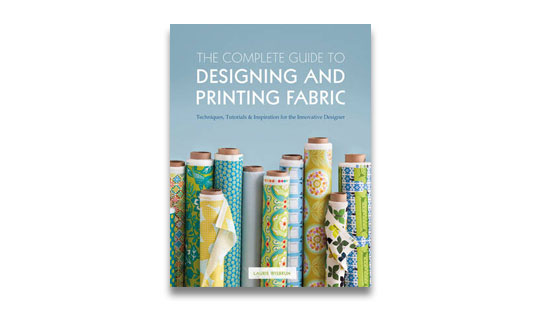
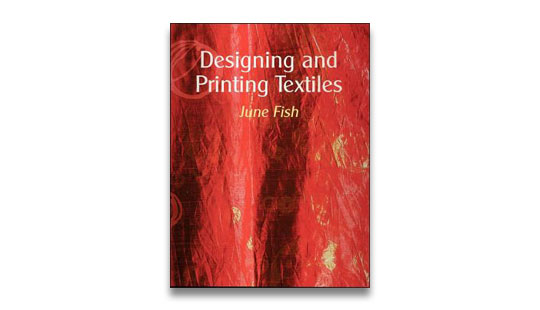
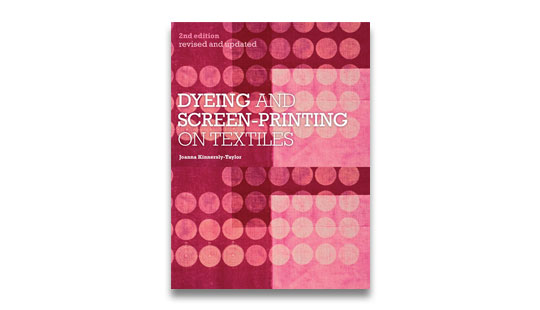
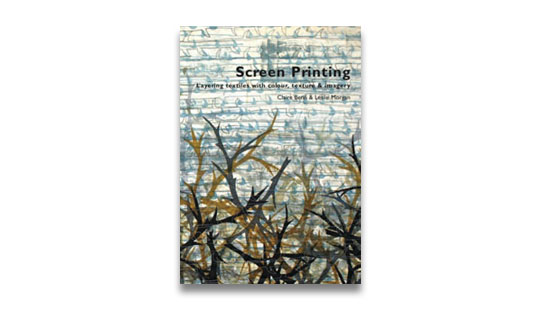
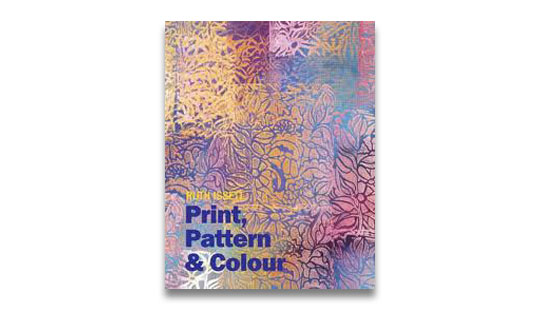
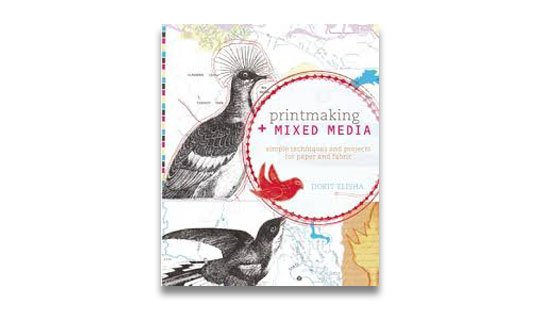
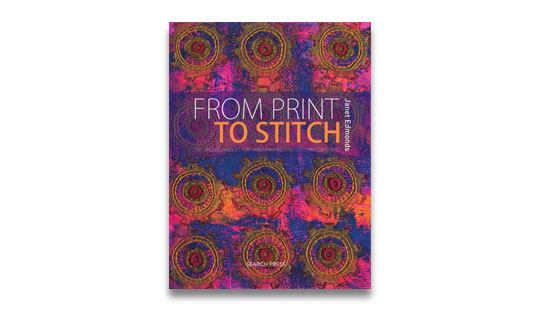
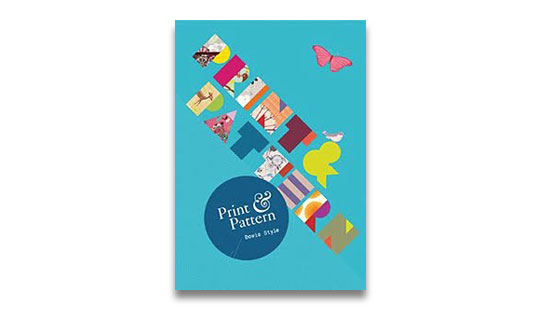















5, Screenprinting: Layering Texiles with Colour, Texture and Images
by Claire Benn is written by Claire Benn and Leslie Morgan
Hi Leslie – apologies for the oversight. I’ll amend now.
Interesting but difficult to find Fabric Printing book focused on Natural Dyes.
Any suggestion?
King regards,
Antonio
The craft of natural dyeing Jenny Dean – SearchPress 🙂
I’ve not seen it, but have heard great things about “Eco Colour: Botanical Dyes for Beautiful Textiles” by India Flint and have it on my to-buy list. Might be worth taking a look!
I want them all !
I bought a book several years ago which is not entirely about fabric printing but about making your own natural dyes. The book ‘Natural Dyes’ by Linda Rudkin was published in 2007 (by A&C Black, Publishers, London) and is an excellent handbook for learning the requirements of dyeing and the dyeing process. Beautiful sample boards are illustrated with comments given about the dye.
Regards, Pauline.
Well, these books are useful for fabric designer. However, you did not include a fantastic book in your article “A Guide to Creative Design Fundamentals” by Terry A. Gentille, 1982.
At this moment I am going to do my breakfast,
later than having my breakfast coming over
again to read further news.
My biggest problem is finding a book that covers designing printed home textiles, specifically making repeats for large florals, even free-form design for same. Having several books that show how to do very basic repeats, most are for small and dense or small non-floral patterns.
very good books thankfuly
Awesome! Thanks for your sharing. testextile.com/what-is-the-history-of-textile-printing
I am looking for a book that includes resist stamping on fabric. I was gifted several old wooden stamps. I don’t want to damage the stamps, but want to be able to remove the resist from them after use. Any suggestions as to how to or a book will be appreciated.
Very nice article. All these books are really amazing. These shares detailed information about textile printing. Thanks for sharing this post.
Any PDF versions of those books or other Ebooks?
Every one of these books is truly amazing. Thanks for sharing an informative post with us.
Thanks for sharing valuable information with us. Every one of these books is truly stunning.
Very Awesome and Help full Article. It really helps me. Thanks for sharing this.